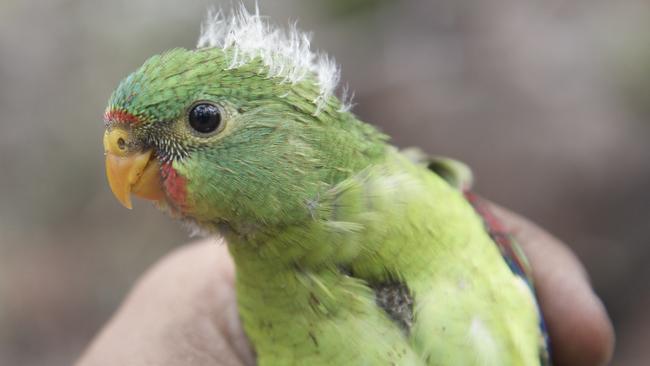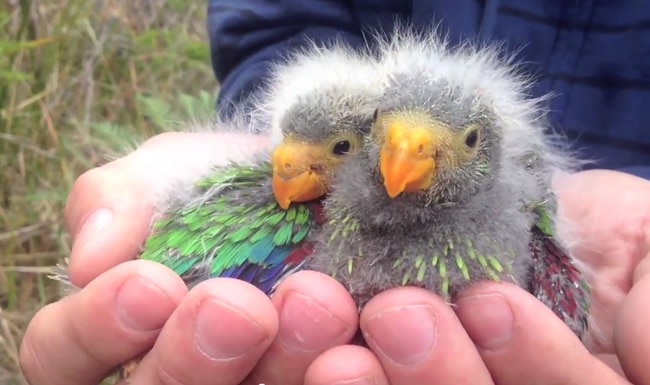Tasmanian birds like the swift parrot and orange-bellied parrot more likely to be endangered, new research reveals
Following a recent celebrity endorsement from Leonardo DiCaprio, new research has revealed why birds like the swift parrot are more likely to be endangered.

Tasmania
Don't miss out on the headlines from Tasmania. Followed categories will be added to My News.
Birds that live on islands like Tasmania are more likely to be endangered.
New research by the Australian National University has looked into the factors that make certain bird species more susceptible to being endangered.
Study lead author George Olah said that Australia had over 750 bird species.
“Firstly, species living only on islands were much more likely to be at risk of extinction,” Dr Olah said.
“Think of the emblematic swift parrot and orange-bellied parrot of Tasmania, both considered critically endangered.

“This may be because they are less well prepared for the threats posed by introduced species like rats, cats and other mammals.”
It is estimated that only 750 swift parrots are left in Tasmania, with actor Leonardo DiCaprio recently taking to Instagram to urge people to help protect the remaining habitats of the bird species.
In response to the post, environmental activist Bob Brown invited DiCaprio to visit Tasmania, its forests and wildlife.
Dr Olah said other factors included the species’ ability to survive in agricultural areas and the birds’ uniqueness.
“The more able they were to find food in agricultural areas, the less endangered they were
predicted to be,” Dr Olah said.
“If they can adapt to take advantage of new agricultural lands, perhaps after some of their
habitat has been destroyed to make way for it, it’s probably a big benefit for the species.”
“The burden of extinction risk seems to disproportionately impact species that have high
uniqueness.
“Some of these shared traits are also connected to form a larger pattern.
“For example, we know slow breeders that have a larger body size and maybe live longer generally find it harder to cope with environmental changes.”
Dr Olah said many bird species are facing an uncertain future.
“The numbers are quite sad.
“By 2020, eight species were already considered extinct, and 10 per cent were threatened with extinction.
“But if we understand more about the factors that increase extinction risk, we can better
prioritise conversation efforts.
“Some species are more prone to extinction than others – we wanted to find out why.”
The study forms part of the publication Emu’s special edition on threats to Australian birds.




